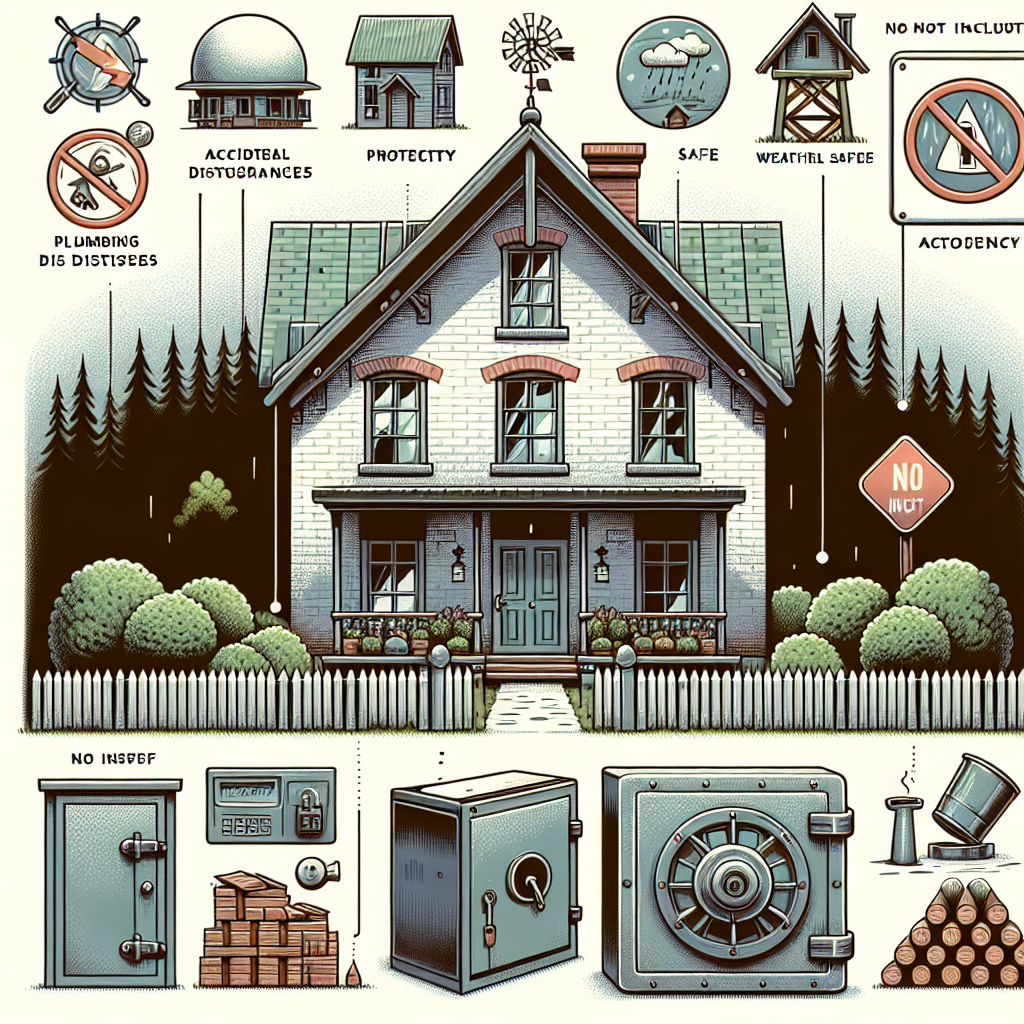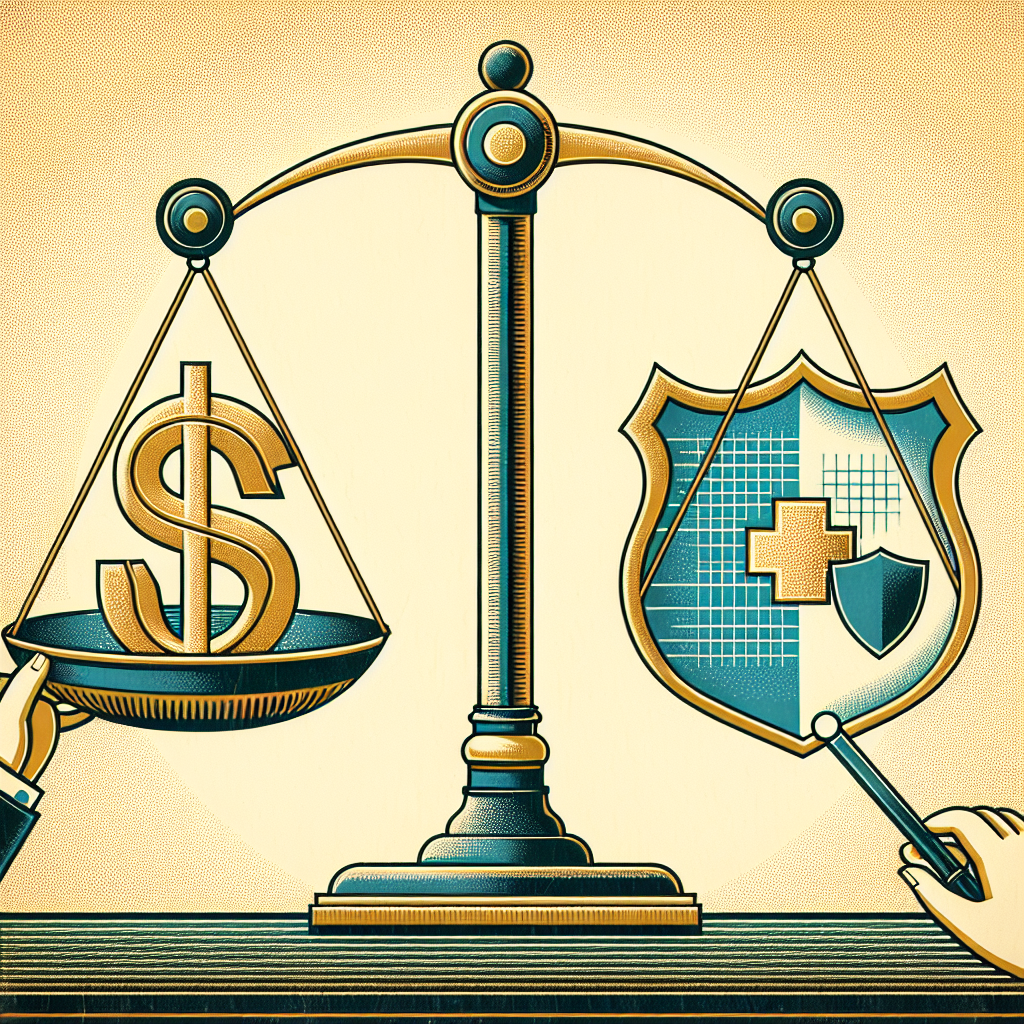Filed under Home Insurance on
How Much Insurance Coverage Should You Have for Your Home

Most people buy a policy, tuck it in a drawer, and hope they never need it. But hope is not a strategy. If a fire, storm, or burst pipe tests your policy, the only question that matters is whether your limits can rebuild your life. If you’ve ever asked yourself, How Much Insurance Coverage Should You Have for Your Home, you’re in good company. The answer is precise enough to plan and flexible enough to fit your budget—once you understand the moving parts.
What a Home Policy Actually Protects
Home insurance is designed to do four big jobs:
- Rebuild or repair the structure (your dwelling)
- Replace your belongings (personal property)
- Shield your finances if someone is hurt and sues (liability)
- Pay for living elsewhere while repairs happen (additional living expenses)
Knowing these buckets—and how insurers set limits in each—makes it easier to dial in the right numbers for your needs.
How to Approach the Question: How Much Insurance Coverage Should You Have for Your Home
Start by separating emotion from math. Your home might be priceless to you, but insurers price risk based on rebuilding cost, not sentimental value or even market value. A smart approach is to estimate your true reconstruction cost, layer on protections for surprises, and then tune personal property, liability, and loss-of-use limits to your risk tolerance and local realities.
Dwelling Coverage: Your Rebuild Budget
Dwelling coverage—often called Coverage A—is the backbone of your policy. It should reflect the cost to reconstruct your home as it stands today, using similar materials and workmanship. The land under your house is not covered, and market value isn’t the right benchmark.
Why reconstruction cost has surged
Industry data and news from carriers consistently show that labor shortages, supply-chain swings, and frequent severe weather have pushed reconstruction costs well above pre-2020 levels. Building materials like lumber, copper, and roofing have seen notable volatility. Organizations such as the Insurance Information Institute and various carrier cost indices have highlighted a multi-year trend of elevated rebuild pricing, which is exactly why annual policy reviews now matter more than ever.
Step-by-step: Estimating your dwelling limit
- Measure livable square footage. Exclude unfinished basements or garages unless you’ve finished them to living standards.
- Find a realistic cost per square foot for your area. Get this from a licensed contractor, a professional appraiser, or your insurer’s replacement cost estimator—not from real estate listings.
- Adjust for complexity and finishes. Higher ceilings, custom cabinetry, stone counters, premium windows, intricate trim, and specialty roofs all push costs up.
- Account for code upgrades. If your home is older, you may need to rebuild to modern building codes, which adds cost.
- Add a cushion for volatility. Extended replacement cost endorsements (often +25% to +50%) or guaranteed replacement cost can absorb unexpected spikes.
Example: A 2,200-square-foot home with regional rebuild costs of $250 per square foot would need a base dwelling limit around $550,000. If you select a 25% extended replacement cost endorsement, your effective ceiling becomes roughly $687,500—helpful if construction bids jump after a community-wide catastrophe.
To put it plainly, answering How Much Insurance Coverage Should You Have for Your Home begins with a credible reconstruction figure and a contingency buffer.
Personal Property: Everything You Own
Personal property (Coverage C) replaces furniture, clothing, electronics, kitchenware, toys, books—everything that would fall out if you turned the house upside down and shook it. The default limit is often 50% to 70% of dwelling coverage, but that’s a blunt instrument. A careful inventory yields better accuracy.
Replacement cost vs. actual cash value
- Replacement Cost Coverage: Pays today’s price to buy a new equivalent item. This is usually worth the small premium increase.
- Actual Cash Value: Pays replacement cost minus depreciation. Your five-year-old TV might only net pennies on the dollar.
Mind the sublimits
Most policies cap certain categories: jewelry, watches, firearms, silverware, collectibles, cash, and business property. If you own a few high-value rings or a vintage guitar collection, ask about scheduling items or adding a personal articles floater. You’ll need appraisals or receipts, but claims are smoother and limits higher.
If you’re working through How Much Insurance Coverage Should You Have for Your Home and own specialized gear—camera kits, e-bikes, sports equipment, musical instruments—don’t rely on default sublimits. Tailor the coverage to the collection you actually have.
Liability Coverage: Protecting Your Net Worth
Liability coverage pays legal costs and damages if someone is injured on your property or if you or family members accidentally injure others or damage their property away from home. Because legal bills can escalate quickly, many advisors suggest at least $300,000 to $500,000 in personal liability for typical households; higher-net-worth families often carry $1,000,000 or more.
Consider an umbrella policy
A personal umbrella policy adds $1 million to $5 million of extra liability coverage on top of your home and auto policies, usually for a modest premium. If you have high assets, young drivers, a pool or trampoline, or host frequent gatherings, an umbrella can be the single best value in insurance.
Thinking through How Much Insurance Coverage Should You Have for Your Home should naturally include your broader liability picture—because lawsuits don’t stop at your property line.
Additional Living Expenses (ALE): Staying Afloat While You Rebuild
ALE, sometimes called Loss of Use, covers the extra costs of living elsewhere when your home is uninhabitable after a covered loss. This can include temporary housing, increased food expenses, mileage to work, and storage fees.
- Typical limit: 20% to 30% of dwelling coverage. In high-rent metro areas, this may be too low.
- Tip: Ask your agent how ALE pays in your state—some policies use time limits (e.g., 12 to 24 months) and others use dollar limits. You want both to be adequate.
Deductibles: Your Skin in the Game
The deductible is what you pay out of pocket before insurance kicks in. Higher deductibles lower premiums but increase your cost at claim time. Choose a number you can comfortably pay without financial strain.
- All-peril deductible: Often a flat dollar amount, such as $1,000 or $2,500.
- Wind/hail or hurricane deductibles: In many regions, these are a percentage of dwelling coverage (e.g., 1% to 5%). Know which apply to you.
Perils That Need Separate Policies or Endorsements
- Flood: Standard home policies don’t cover flood. Consider a National Flood Insurance Program policy or private flood coverage if you’re near waterways or in heavy rainfall zones.
- Earthquake: Typically excluded; separate policy needed in seismic regions.
- Water backup: Add an endorsement to cover damage from a backed-up drain or sump pump failure.
- Service line and equipment breakdown: Endorsements that can cover underground utility lines or major system failures.
- Ordinance or law: Pays for code upgrades during reconstruction, critical for older homes.
Market Value vs. Rebuild Cost: Why the Difference Matters
Market value bakes in land, school districts, and buyer demand. Insurance covers the structure and attached features, not what a buyer would pay for location. A $600,000 home in a hot market might cost $400,000 to rebuild—or, conversely, a $350,000 home in a lower-cost market might cost $450,000 to rebuild if it has premium finishes and labor is scarce. Always insure to reconstruction cost, and let the housing market do whatever it will.
Policy Forms and Features: HO-3 vs. HO-5 and More
- HO-3: The most common policy; covers the home for open perils and personal property for named perils unless you add enhancements.
- HO-5: Broader coverage, often including open perils for personal property and higher default limits.
- Inflation guard: Automatically increases your dwelling limit annually to track construction costs.
- Extended or guaranteed replacement cost: Gives you a cushion if costs exceed your base limit.
Regional Realities and Building Codes
Local building codes, labor rates, and materials availability are decisive. Coastal properties may require impact-rated windows; mountain homes might need steep-pitch roofs and specialized snow load engineering; historic districts may mandate expensive restoration techniques. When you ask, How Much Insurance Coverage Should You Have for Your Home, factor in what your town’s permit office will actually require you to rebuild.
Major Upgrades and Life Changes That Trigger a Review
- Renovations: Kitchen and bath remodels, finished basements, additions, upgraded HVAC, or solar installations.
- Lifestyle changes: Starting a home business, caring for a multi-pet household, frequent hosting, or short-term renting.
- Valuables: New jewelry, art, or collectibles that need scheduling.
- Region: Moving to an area with wildfire, wind, or convective storm exposure.
Update your insurer within 30 days of major changes, not at renewal. You want accurate limits before a loss happens.
Common Mistakes That Shrink Payouts
- Insuring to mortgage balance instead of reconstruction cost. Your lender’s number is not a reliable proxy for rebuild needs.
- Forgetting code upgrades. Without ordinance or law coverage, those costs come out of your pocket.
- Relying on default personal property limits. Sublimits can cripple a claim for jewelry or specialty gear.
- Skipping inventory. Without a record, you’ll miss items and settle for less than you owned.
- Choosing the lowest deductible you can find. A too-low deductible can make premiums inefficient over time.
None of these mistakes are complicated to fix, and avoiding them moves you closer to a confident answer to How Much Insurance Coverage Should You Have for Your Home.
A Practical Worksheet You Can Use Today
- Get a rebuild estimate:
- Square footage x local rebuild cost per square foot
- Adjust for quality level and special features
- Add 25% to 50% extended replacement cost if available
- Confirm ordinance or law coverage is included
- Inventory your belongings:
- Use a smartphone to video each room, closet, and drawer
- Store receipts and serial numbers in the cloud
- Upgrade to replacement cost for personal property
- Right-size liability:
- Minimum: $300,000 to $500,000
- Consider $1,000,000 and an umbrella if you have assets or higher risk
- Set ALE realistically:
- Check local rents and hotel rates
- Increase limits if you’re in a high-cost area
- Pick deductibles you can handle:
- Consider higher deductibles for premium savings—without jeopardizing cash flow
- Know your wind/hail or hurricane percentage deductibles
- Close the gaps:
- Add flood, earthquake, water backup, and service line if relevant
- Schedule valuables beyond sublimits
What Experts and Trends Suggest
Insurers’ own replacement cost estimators, informed by building cost data and contractor inputs, remain the gold standard for dwelling limits. Independent consumer advocates and many financial planners also emphasize replacement cost for personal property and higher liability limits as cost-effective upgrades. On trend, carriers have widened their use of inflation guard endorsements and revised replacement cost tools more frequently to keep pace with volatile material and labor costs. Wildfire mitigation, roof condition, and water-loss prevention tech (like automatic shutoff valves) may unlock discounts—and, in some regions, eligibility. Lean into these programs where offered.
Special Situations: Condos, Rentals, and Older Homes
- Condos (HO-6): You insure from the walls in—interior finishes, improvements, and personal property. Read your association’s master policy to avoid gaps.
- Landlords (DP-3): Different policy form with landlord liability, loss of rent, and tailored property coverage.
- Older homes: Consider endorsements that account for unique materials and craftsmanship. Ensure robust ordinance or law coverage, since code updates can be significant.
Real-World Scenarios
Scenario 1: The kitchen remodel
You remodel a 1980s kitchen with custom cabinetry and stone counters. Your old dwelling limit assumed mid-grade finishes. After a small fire, the adjuster prices replacement at premium rates—but your limit falls short. The fix would have been a mid-year update to your replacement cost estimate and a bump in ordinance or law coverage to handle code-related ventilation and electrical upgrades.
Scenario 2: The tree and the trampoline
A neighbor’s child is injured on your backyard trampoline. Medical bills and legal fees follow. A $500,000 liability limit—plus a $1 million umbrella—prevents asset liquidation and future wage garnishment. When debating How Much Insurance Coverage Should You Have for Your Home, high-risk features make the case for more generous liability unmistakable.
Scenario 3: Regional catastrophe
A hailstorm rips through your area. Roofers are booked for months, and material prices jump 20%. Extended replacement cost coverage absorbs the surge. Without it, you’d be negotiating over scraps of your limit or paying out of pocket.
Annual Review: A 30-Minute Habit That Pays Off
- Confirm your dwelling limit against current rebuild costs
- Re-scan your home inventory with a quick video
- Check sublimits against new purchases
- Update liability and umbrella limits as your assets grow
- Ask about new endorsements or discounts for risk-reduction upgrades
Five Quick FAQs
Do I insure my land?
No. Land isn’t at risk from fire and similar perils. Insure only the structure and attached features.
Is market value ever relevant?
Not for setting dwelling coverage. Use reconstruction cost. Market value helps you plan financially but isn’t a coverage benchmark.
What if my home is very unique?
Request a detailed onsite replacement cost survey. Consider guaranteed replacement cost and higher ordinance or law limits. Specialty or high-value home carriers might be a better fit.
How often should I update limits?
Review annually and after any renovation, major purchase, or life change. Construction costs move—your coverage should too.
Do I need business coverage at home?
If you run a home business, standard sublimits for business property and liability are usually small. Ask about a home business endorsement or a separate policy.
Putting It Together: A Clear Answer
So, How Much Insurance Coverage Should You Have for Your Home? Enough to fully rebuild your house at today’s prices, replace your belongings at new-for-old values, maintain your lifestyle elsewhere during repairs, and protect your assets from lawsuits—with an extra buffer for the unexpected. In practice, that means:
- Dwelling coverage based on a current, credible reconstruction estimate plus extended or guaranteed replacement cost
- Replacement cost coverage for personal property, with scheduled items for valuables
- Liability limits of at least $300,000 to $500,000—often $1,000,000 plus an umbrella for higher-risk or higher-asset households
- ALE tuned to your local rental and hotel market
- Endorsements and separate policies for excluded perils like flood and earthquake
When you revisit the question—How Much Insurance Coverage Should You Have for Your Home—a few tweaks each year can keep your policy aligned with reality as prices and circumstances change.
Action Steps for the Next 7 Days
- Ask your insurer or agent for a fresh replacement cost estimate and verify inflation guard is active.
- Record a 10-minute video inventory of your home and upload it to cloud storage.
- Review personal property sublimits; schedule jewelry or other valuables if needed.
- Increase liability to at least $500,000 and price an umbrella policy.
- Check ALE and adjust if rents are high in your area.
- Evaluate add-ons: water backup, service line, equipment breakdown, ordinance or law.
- If in a flood- or quake-prone area, get quotes for separate policies.
Final Thoughts
Insurance only shines when it meets the moment. Set your limits to match how homes are really rebuilt and how claims really unfold. Keep your documentation simple but thorough. Revisit your policy when life changes—or when the news suggests costs are on the move. When you frame the decision around resilience, budget, and local realities, the answer to How Much Insurance Coverage Should You Have for Your Home becomes clear, actionable, and reassuring.





